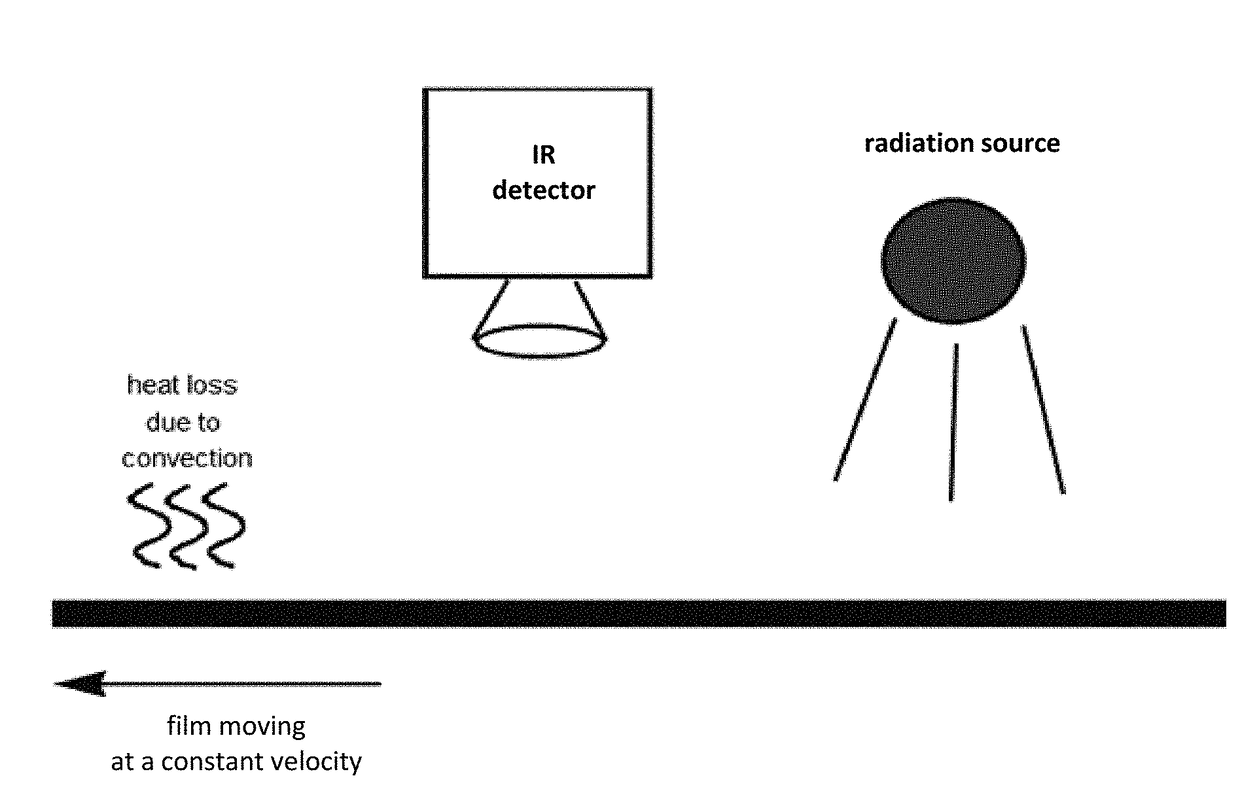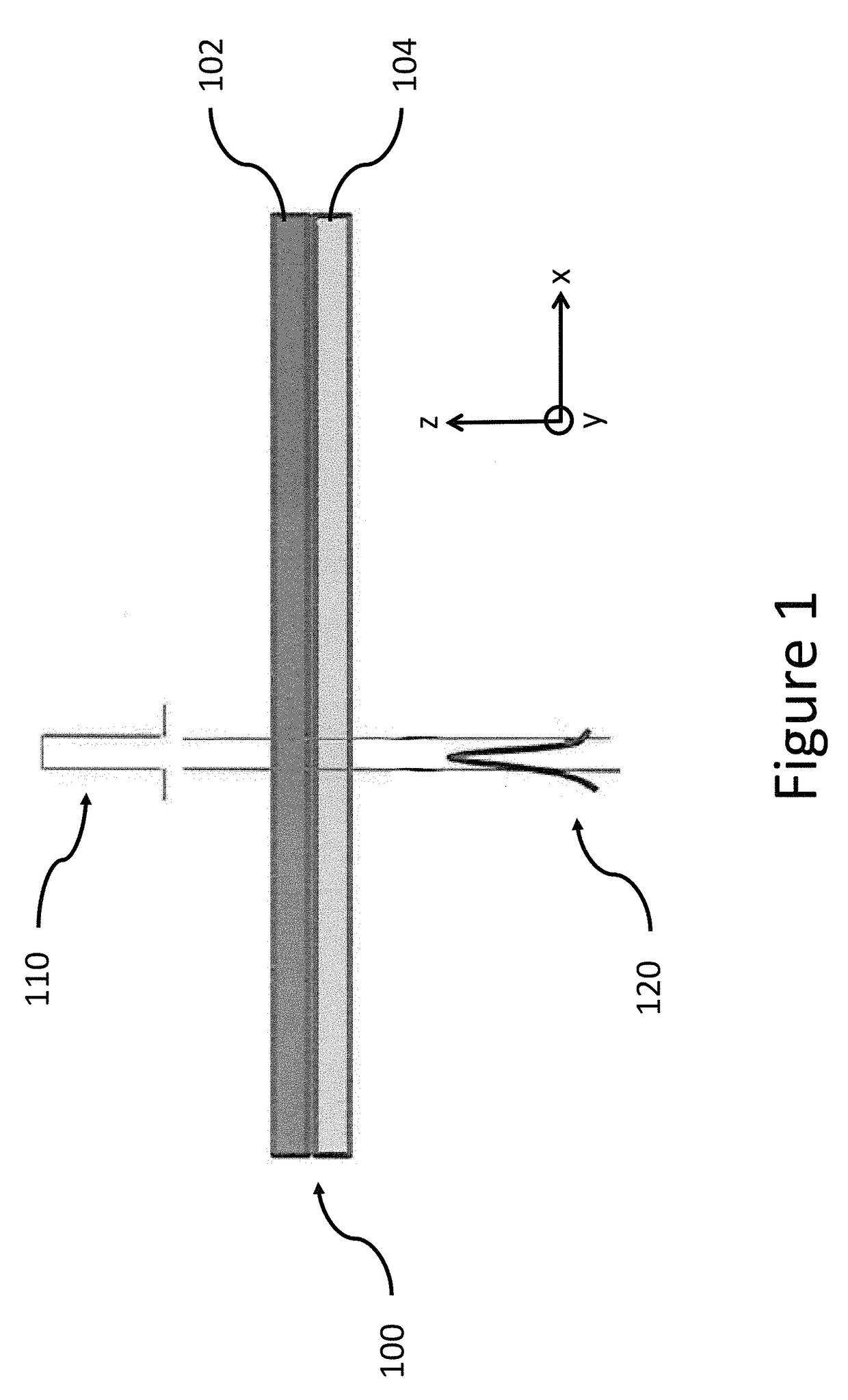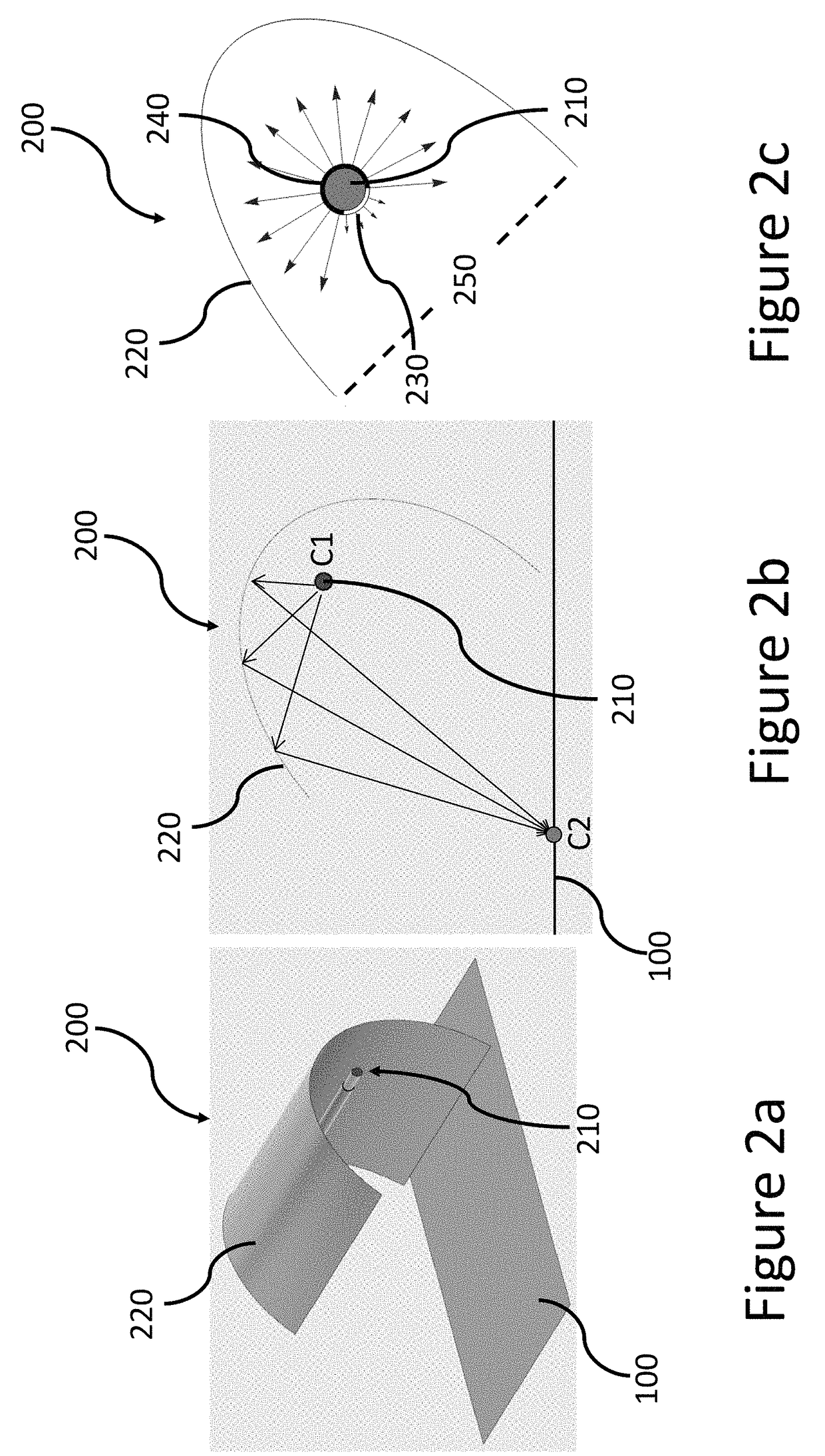Batch and continuous methods for evaluating the physical and thermal properties of films
- Summary
- Abstract
- Description
- Claims
- Application Information
AI Technical Summary
Benefits of technology
Problems solved by technology
Method used
Image
Examples
example 1
[0132]Referring to FIG. 14, a battery electrode 700 was positioned on glass rods 710 and 720 to minimize conductive heat losses to the environment. The electrode 700 was a bilayer electrode constructed from a top porous film 702 positioned in direct physical contact with a bottom metallic film 704. In this example, the top film 702 was a 75 micron thick Li ion battery cathode constructed of NMC532 particles, Denka Black particles and PVDF polymer binder. The bottom film 504 was a 15 micron thick Aluminum film. A tungsten halogen line radiation source 200 was used to provide the energy input to the battery electrode 700 by focusing the light through a lens 740. In this example, the halogen radiation source 200 provided a power input of about 200 mW / cm2. The radiation source 200 applied radiation to the battery electrode 700 in a static set-up where neither the light, the thermal response detector 400, nor the electrode was moved during the illuminating. A starting temperature of the ...
example 2
[0136]This example summarizes the results obtained from one embodiment of the present disclosure, where the films were not held statically, but instead were moved in a linear direction relative to a fixed radiation source and a fixed detector. This experiment investigated another embodiment of the present disclosure, one that simulated continuous evaluation of a moving film (relative to the energy source and the thermal response detector), as might occur in a large-scale, continuous manufacturing plant. Specifically, the same basic experimental setup as described above for FIG. 14 was utilized, except that the film was moved from right to left at a speed of about 0.1 inches / second underneath a fixed LED line radiation source (the radiation source) and a fixed IR camera (the detector). The radiation source and the detector were positioned on the same side of the film. The camera's field of view was about 6 inches by 6 inches (in the X and Y directions) and the field of view included ...
example 3
[0139]This example illustrates a process for measuring the porosity of Li ion battery electrodes, utilizing one or more heated rollers for providing heat transfer to the electrodes to cause a measurable temperature change within the electrodes. In this example, the micro-structure of the electrodes includes two main layers as shown in FIG. 19: a metal (aluminum or copper) foil base layer on which is positioned a layer of functional particles joined together by a polymer binder. The porosity of the functional particle layer may be substantial, typically in the 40-60% range. Monitoring and precise control of this porosity is crucial for proper operation of the final battery that utilizes the electrodes. The functional particle layer is formed in a die coater process, with the resultant coating dried in an oven. After drying the electrode bilayer film may be passed through an evaluation system that includes a heated roller and a detector to perform an in-line evaluation of the function...
PUM
 Login to View More
Login to View More Abstract
Description
Claims
Application Information
 Login to View More
Login to View More - R&D
- Intellectual Property
- Life Sciences
- Materials
- Tech Scout
- Unparalleled Data Quality
- Higher Quality Content
- 60% Fewer Hallucinations
Browse by: Latest US Patents, China's latest patents, Technical Efficacy Thesaurus, Application Domain, Technology Topic, Popular Technical Reports.
© 2025 PatSnap. All rights reserved.Legal|Privacy policy|Modern Slavery Act Transparency Statement|Sitemap|About US| Contact US: help@patsnap.com



